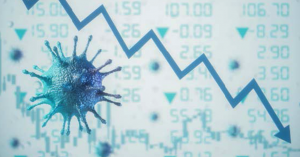What more can the Fed do?

With coronavirus cases rising and Washington in partisan gridlock, the likelihood of more aggressive Fed action is rising
As the coronavirus continues to wreak havoc, the US economy faces immense pressure in the near term due to surging Covid-19 cases and the lack of stimulus. Given these significant headwinds, on November 20, 2020, JPMorgan became the first major bank to update its 2021 outlook with negative GDP growth for the first quarter, and growth estimates are expected to continue to be subject to additional downward revisions.
With Washington seemingly unable to address the effects of the coronavirus due to partisan gridlock, the United States Federal Reserve will continue to play an outsize role in the economic recovery. Jerome Powell, the Chairman of the Federal Reserve, indicated in his November 5, 2020 press conference after the last Federal Open Market Committee (FOMC) meeting that current Fed policy was “appropriate,” but “…the accelerating spread of the virus may be changing that assessment…”. On November 5, 2020 the US registered approximately 121,000 new cases of Covid-19. As of November 20, 2020 that number has increased to over 180,000 a day and continues to climb.
Given these concerning trends, the Fed is likely to take more aggressive action to shore up the economy. Moreover, with the United States Treasury Department’s recent request that the Fed wind down several of its emergency lending programs at the end of the year, the Fed has additional impetus to act in the near term.
The central bank has taken unprecedented action since March 2020 to address the Covid-19 crisis. It has already lowered the fed funds rate (the Fed’s main policy tool) to near zero percent. In addition, as part of its quantitative easing program, the Fed has been buying $80 billion of treasury bonds and $40 billion of agency mortgaged-backed securities every month. The Fed has also launched numerous lending programs aimed at market function and lending.
Despite these unprecedented actions, the Fed has a few more options at its disposal that it could announce in the coming months:
- Modifications to the Fed’s Existing Quantitative Easing Program. Quantitative easing is essentially when the central bank prints money to purchase government or other bonds on the open market, with the goal of putting pressure on interest rates. Bonds are affected by supply and demand like anything else, so when a large buyer like the Fed creates demand, bond prices rise resulting in a decline in yields. While the current $120 billion a month quantitative easing program is far larger than the $85 billion monthly peak utilized by the Fed during the Great Recession of 2007-2008, the Fed has appeared open to increasing the size of this program.In fact, after the November 5, 2020 FOMC meeting, Chairman Powell acknowledged the committee had “quite a useful discussion” about options for modifying its bond-buying program. Given that long term treasury yields have risen sharply since the election and the announcement of a successful Covid-19 vaccine, from the 0.50% to 0.70% range since the start of the crisis to close to 1.00% today, the Fed is likely to focus any modifications to its quantitative easing program on purchases of longer term bonds, as the Fed’s current program is spread fairly evenly across the yield curve between short and long term debt.
- The Possibility of Negative Rates. The fed funds rate is a benchmark for other interest rates, so adjusting such rate could lower the cost of mortgages, auto and other loans, while also reducing interest rates on savings accounts. However, the Fed has already reduced the fed funds target rate to near zero percent so the Fed would have to implement negative interest rates to lower rates further. Other central banks around the world, most notably the Bank of Japan and the European Central Bank, have further reduced interest rates to below zero to some success, but to the detriment to their domestic banking industries. Negative rates in the United States would further pressure interest margins at banks, which are already stressed with near zero rates. Given the controversy surrounding negative rates, the Fed has indicated that it is unlikely to pursue negative rates in the future.
- Changes to Forward Guidance. The Fed frequently used “forward guidance” as a tool during the Great Recession, whereby the Fed provided future forecasts of its monetary policy to influence market expectations for interest rates. The Fed can keep interest rates low and stimulate the economy by committing to continue its quantitative easing program, or keeping interest rates at a certain level through a certain date. It is highly likely that the Fed will utilize such tool in the future, and may even indicate that it will allow higher inflation than its usual 2% target until the economy regains its footing. Given that the Fed traditionally raises interest rates to fight inflation, this could have a significant stimulative effect on the economy.
- Yield Curve Control. In addition to the tools described above, the Fed could use another policy tool called “yield curve control” where the Fed commits to buying whatever amount of bonds are necessary to cap long term interest rates. This was done during World War II but has not been utilized by the Fed since 1951. Yield curve control has been used recently by the Bank of Japan and the Reserve Bank of Australia, so it is possible that the Fed will utilize such a program if the economy continues to deteriorate.
- Monetizing the Debt. This is a form of quantitative easing by which the Fed buys debt directly from the government. While similar to quantitative easing, monetizing the debt allows the government to directly finance itself with printed dollars. This policy would be subject to intense debate, as many economics argue that monetizing the debt would potentially create runaway inflation in the economy. The Bank of England has recently agreed to do this to reduce the supply of government bonds in the marketplace, thereby reducing interest rates, but this is highly unlikely to happen in the United States given the political controversy surrounding the idea.
While Chairman Powell has repeatedly emphasized the importance of the fiscal response to handling the Covid-19 crisis, the Fed has shown its willingness and ability to act in times of crisis. Given the current political environment and recent rise in cases, the likelihood of Fed action in the coming weeks is high.
By Wesley King
Associate at Frandzel Robins Bloom & Csato, L.C.
